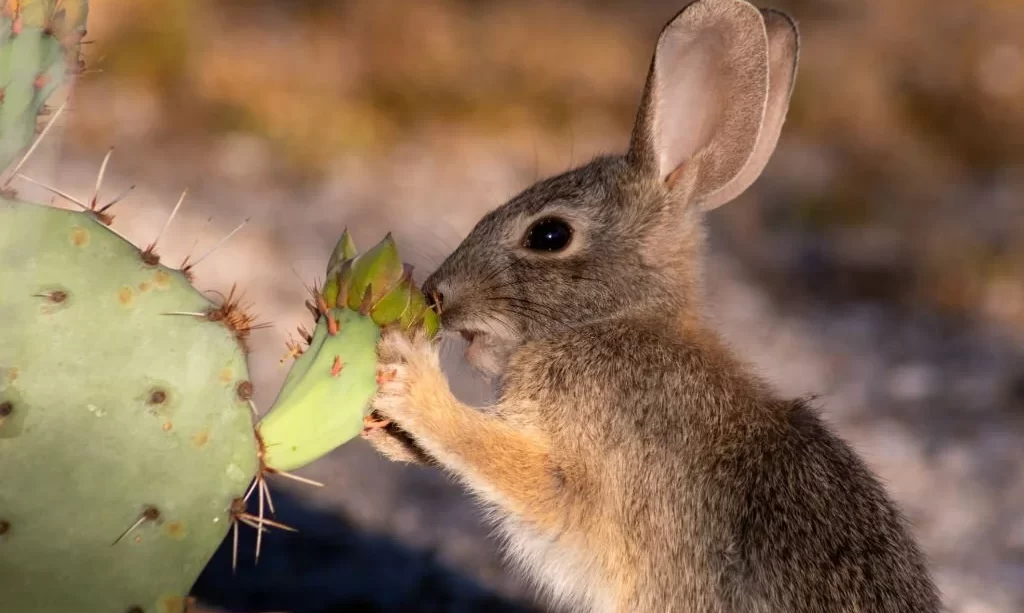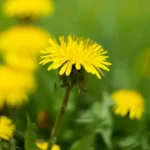Deserts, with their unforgiving arid landscapes and scorching sun, are among the most inhospitable places on Earth. Yet, they are home to some of the most remarkable examples of life’s ability to adapt and thrive in the harshest of conditions. In these arid regions, one group of plants stands as an iconic symbol of endurance and resourcefulness: cacti. These prickly, water-storing succulents have evolved to not only survive but flourish in environments where water is scarce, and temperatures are extreme. However, cacti are not just survivors; they are also a vital source of sustenance for an array of desert-dwelling animals. This article delves into the fascinating world of animals that have adapted to consume cacti, showcasing their remarkable resilience and survival strategies in the desert.
The Cacti of the Desert
Before we explore the intriguing world of desert herbivores, it’s crucial to acquaint ourselves with the stars of this arid show—cacti. These unique plants are emblematic of desert ecosystems, with their distinctive features and adaptions that make them ideally suited to thrive in the face of adversity.
Cacti belong to the family Cactaceae and are renowned for their ability to store water in fleshy stems and leaves, allowing them to endure extended periods of drought. Their iconic appearance, adorned with spines or prickly glochids, provides protection against herbivores seeking to exploit their water reserves. There is a wide variety of cactus species, each displaying its unique form and adaptations to the specific challenges of desert life. From the towering saguaro cactus of the Sonoran Desert to the low-growing prickly pear and barrel cacti, these plants have evolved to not only endure the harsh conditions but to serve as an unexpected source of nourishment for a select group of animals.
Herbivores of the Desert: Who Eats Cacti?
Surviving in a desert environment often demands an exceptional set of skills, and some animals have taken a unique path by incorporating cacti into their diets. These desert herbivores have evolved a suite of physical and behavioral adaptations that enable them to access the valuable resources stored within cacti.
One of the most iconic cactus-eating herbivores is the desert tortoise (Gopherus agassizii). This resilient reptile, native to North American deserts, has a diet largely composed of cacti and other desert plants. Its powerful jaws, coupled with a unique throat structure that allows it to process the spines, enable the tortoise to access the water-rich pulp inside the cacti.
But the desert’s herbivorous residents are not limited to tortoises. A range of animals, from the spiny-tailed iguana to the elusive collared peccary, have developed their own strategies for dining on cacti. These creatures have not only overcome the challenge of the cactus’s defenses but also contributed to the complex web of interactions that sustain life in the desert. As we delve into the world of these cactus-loving herbivores, their incredible adaptations and survival stories come to the fore, showcasing the relentless determination of life in one of the harshest environments on our planet.
Adaptations for Survival
Surviving in the unforgiving desert environment is a challenge that has spurred the evolution of remarkable adaptations among cacti-eating animals. These adaptations are the result of a relentless struggle to access the life-sustaining water within cacti while avoiding the plant’s formidable defenses.
One of the most striking adaptations is seen in the specialized mouthparts and digestive systems of these herbivores. Desert tortoises, for example, possess tough mouths with thick, keratinized tissue that allows them to chew through the spiny exterior of cacti. This, in combination with strong jaws, enables them to break down the plant’s protective barrier and access the succulent, water-rich interior.
Other desert-dwelling herbivores have developed unique ways to navigate the thorny challenge presented by cacti. Some, like the collared peccary, have adapted by utilizing their strong snouts and lips to selectively pick the spines off the cactus pads before devouring them. This selective feeding behavior allows them to minimize exposure to the plant’s sharp defenses.
In addition to these physical adaptations, desert herbivores have evolved behavioral strategies to maximize their survival. They often forage during cooler parts of the day to reduce water loss through respiration, and some animals carefully select specific cactus species or parts that are less spiny or more palatable. These adaptations collectively illustrate the remarkable resourcefulness of these animals in the face of one of the most challenging environments on Earth.
The Ecological Role of Cacti-Eating Animals
Beyond their impressive adaptations, cacti-eating animals play a crucial ecological role in desert ecosystems. Their feeding habits are intertwined with the life cycles of cacti and other plant species, shaping the distribution and abundance of these desert flora.
One of the most critical roles these herbivores play is in seed dispersal. As they feed on cacti, they ingest the plants’ seeds, which pass through their digestive systems intact. This process aids in seed dispersal, as seeds are often deposited in new areas through the animal’s feces. This dispersal mechanism contributes to the diversity and distribution of desert plants, which rely on these herbivores to transport their seeds to suitable locations for germination.
The ecological connections extend even further. As these animals feed on cacti, they also influence the structure and composition of plant communities in arid regions. Some cacti species have evolved to rely on herbivores for seed dispersal and rely on these animals to help their populations thrive. This complex web of interactions underlines the interdependence of desert life forms and highlights the essential ecological roles that these herbivores play.
In summary, animals that consume cacti in the desert have not only developed astonishing adaptations to access this water-rich resource, but they also contribute significantly to the functioning of these unique ecosystems. Their interactions with cacti are integral to the desert’s ecology, demonstrating the intricate and delicate balance of life in these arid landscapes.
Mutualistic Relationships: Birds and Cacti
While herbivorous mammals have their place in the story of cacti consumption, some of the most captivating mutualistic relationships in the desert involve birds and cacti. Among the most remarkable examples is the Gila woodpecker (Melanerpes uropygialis), a bird that calls the saguaro cactus home. The saguaro’s towering, majestic presence provides not only a nesting site but also a seasonal source of sustenance for these woodpeckers.
The woodpeckers have adapted to extract food from the cactus, particularly during the flowering season. They peck into the saguaro’s flesh, creating a network of holes that eventually yield nectar, fruit, and insects. This process not only provides the woodpeckers with food but also contributes to the cactus’s pollination and seed dispersal. It’s a quintessential example of mutualism in the desert, where both the saguaro and the Gila woodpecker rely on each other for survival. Such mutually beneficial relationships underscore the intricate interconnectedness of life in the desert.
Cactus as a Seasonal Resource
In the arid desert, where water is scarce, cacti become a seasonal lifeline for herbivores. These resilient plants serve as a critical resource during specific times of the year, often when other vegetation is scarce or moisture is limited.
Desert herbivores have learned to time their feeding to align with the availability of cactus resources. For example, during droughts or extended periods of water scarcity, the succulent cactus pads or fruits become a crucial source of hydration and nutrition. Animals like the desert tortoise and desert iguana may rely on cacti as a primary food source during these challenging times.
Furthermore, cacti often synchronize their reproductive and flowering periods with the arrival of seasonal rains. This timing is not coincidental, as it provides a burst of nourishment for animals, especially after arid periods. The seasonal availability of cacti can be a lifeline for herbivores, sustaining them during difficult times and influencing their behavior and reproductive strategies.
Conclusion
The world of animals that eat cacti in the desert is a testament to the power of adaptation and the intricacies of ecological relationships. In the face of some of Earth’s harshest environments, these herbivores have evolved both physical and behavioral adaptations to access the water-rich interior of cacti while navigating their formidable defenses.
Their role extends far beyond mere survival, as these animals shape the ecology of the desert. Their feeding habits influence the distribution and abundance of cacti and other plant species, and they contribute to seed dispersal, thereby helping desert flora proliferate in an environment where water is scarce.
These fascinating interactions highlight the delicate balance of life in arid regions and underline the interdependence of the diverse life forms that have made the desert their home. From the symbiotic relationships between birds and saguaro cacti to the seasonal reliance on cacti as a vital resource, the world of animals that eat cacti offers a captivating glimpse into the resilience and adaptability of life in one of Earth’s most challenging environments.




